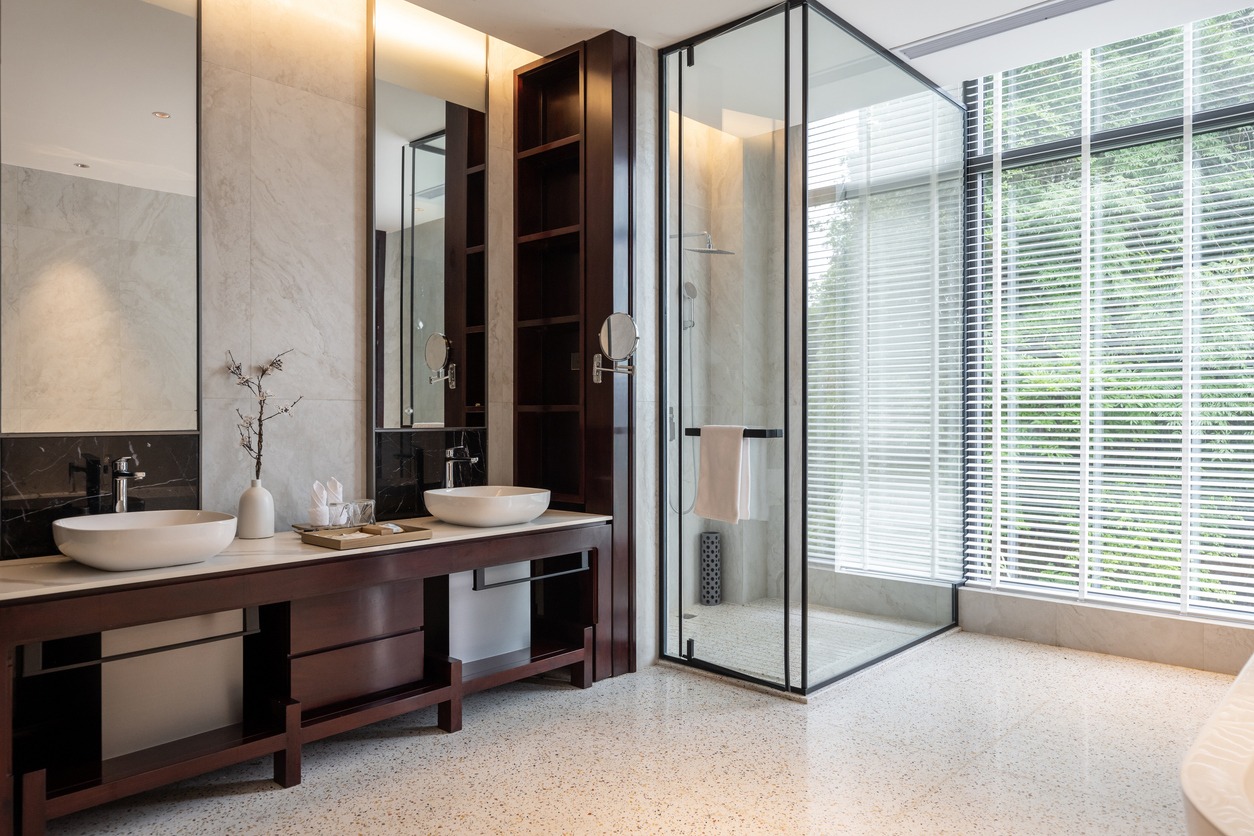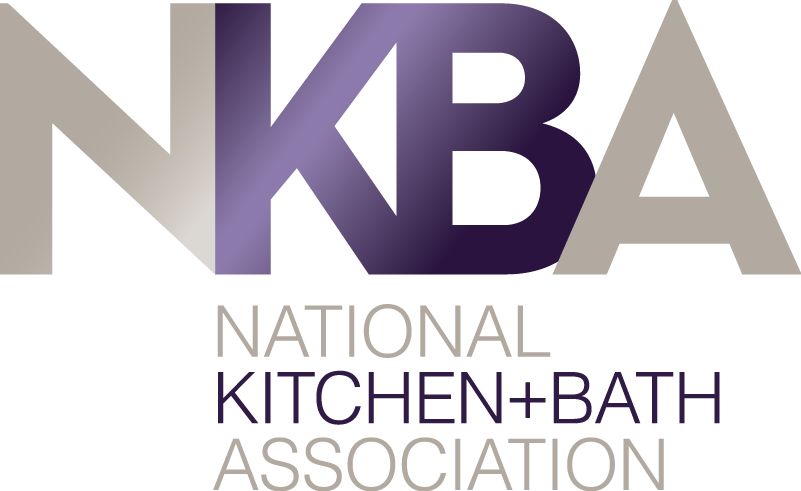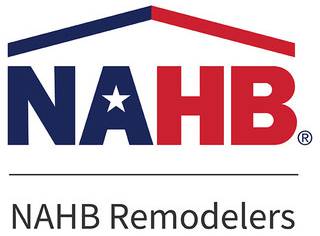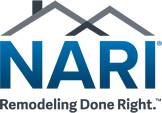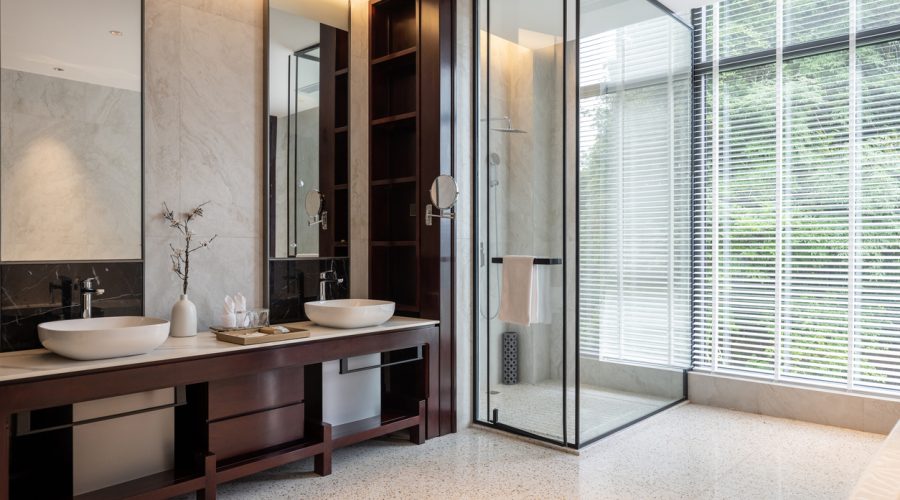
Designing an accessible bathroom is about more than aesthetics—it’s about creating a space that promotes safety, independence, and comfort for everyone. Whether you’re planning for aging in place or accommodating family members with mobility challenges, accessibility should be integrated seamlessly into the design. At DreamMaker Bath & Kitchen of Chester County, we understand that thoughtful planning and design details can make all the difference in ensuring both functionality and style.
Making Space for Wheelchair Access
One of the most important considerations when planning an accessible remodeling project is allowing enough space for wheelchair movement. Doorways should be at least 32 inches wide—36 inches is ideal—to ensure comfortable entry and maneuverability. Eliminating raised thresholds and opting for flush flooring transitions can further ease navigation, making the bathroom safer and more accessible for everyone.
Important Room Dimensions and Layout
An effective layout ensures ease of use without sacrificing design appeal. According to ADA recommendations, a turning radius of at least five feet in diameter allows sufficient space for wheelchair mobility. It’s equally essential to ensure access to key features, including the sink, toilet, and shower. A sink with open space beneath provides knee clearance, while lever-style faucets make daily tasks easier for individuals with limited dexterity. These small yet crucial details contribute to a more user-friendly environment.
Emphasizing Safety With Non-Slip Flooring
Safety is the cornerstone of accessible design. Choosing non-slip flooring materials, such as textured tiles or rubberized surfaces, can significantly reduce the risk of falls in wet environments. Many homeowners undergoing a bathroom remodel choose flooring that combines safety with a sophisticated aesthetic. Options like slip-resistant porcelain or vinyl can blend seamlessly with your chosen color palette while maintaining durability and ease of maintenance.
Showers: Accessible Features
Showers designed for accessibility should feature a barrier-free or curbless entry, wide openings, and enough interior space for a wheelchair to turn easily. Built-in benches or fold-down seats add comfort and practicality, while strategically placed grab bars enhance safety. A handheld showerhead provides flexibility, allowing users to maintain control and comfort while bathing. Together, these elements foster independence and confidence in daily routines.
Choosing the Right Fixtures and Features
Accessibility extends beyond layout—it’s about ensuring every fixture supports comfort and functionality. Single-handle faucets, comfort-height toilets, and bidet attachments can all improve ease of use. Grab bars should be securely installed at ADA-compliant heights and positions for optimal support. Every detail, from the placement of shelves to the height of mirrors, plays a role in creating a bathroom that is safe, intuitive, and elegant.
Enhance Visibility and Usability With Tilted Mirrors
Incorporating angled mirrors can dramatically improve visibility for seated users. Tilting mirrors slightly downward allows individuals in wheelchairs to see themselves comfortably without compromising design appeal. Paired with appropriate lighting, these mirrors contribute to a bright, functional, and inclusive bathroom space.
Let’s Start a Conversation!
If you’ve been searching online for expert help with a safe and stylish bathroom transformation, DreamMaker Bath & Kitchen of Chester County is here for you. Whether you’re planning a full renovation or want to integrate accessible features into your existing layout, our team can deliver personalized solutions that enhance comfort and independence. Contact us today at (610) 484-2000 or fill out our online form to schedule your consultation. Transform your home with a home remodel that prioritizes safety, beauty, and functionality. We proudly serve Chester County, including Chester Springs, Glenmoore, Malvern, Downingtown, and surrounding areas.
